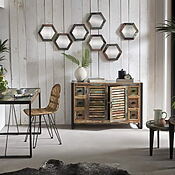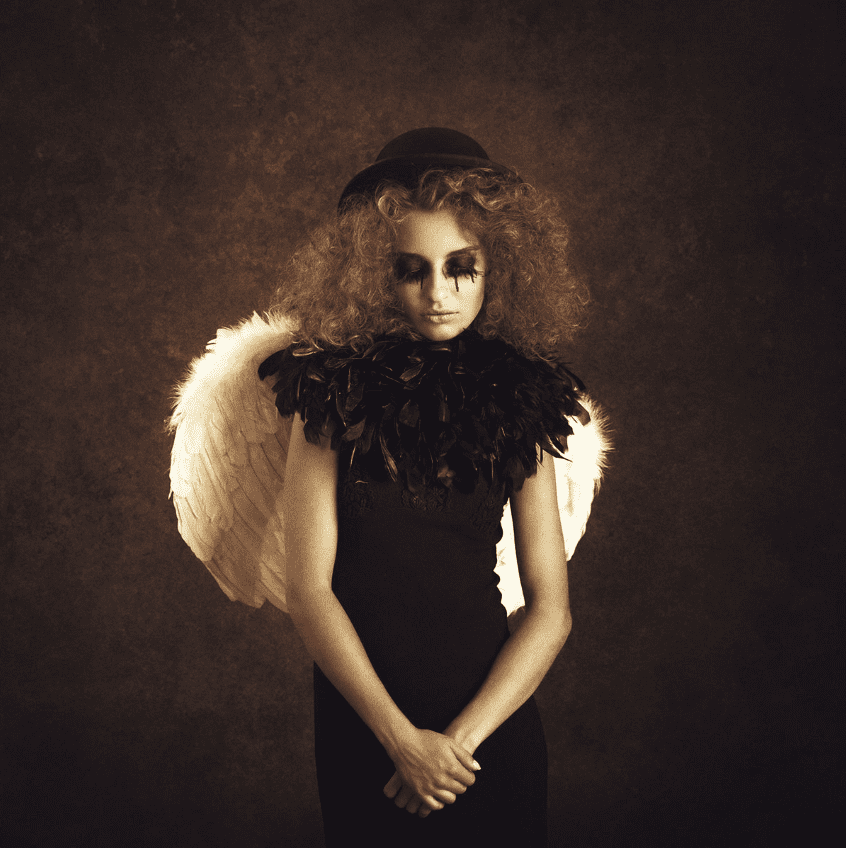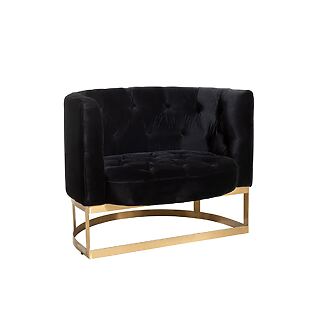A tidy artist's studio is more than just a matter of aesthetics – studies show that organization can significantly boost creativity. Artists respond more quickly to professional demands in a tidy work environment and find more favorable conditions for their artistic endeavors.
The growing popularity of concepts like Japanese Minimalism , Scandinavian Lean , and Swedish Death Cleaning reflects a shift in values, prioritizing space over consumerism.
In fact, regular house and studio cleaning can not only reduce health risks from dust and chemicals, but also extend the lifespan of art materials. A tidy artist's studio also reflects an artist's dedication to their craft and can influence the quality of their work.
The process of cleaning up can also be a meditative practice that enables artists to think about their work and their direction. This not only frees the physical space, but also the mental space for new ideas is created. However, this organized approach to creative space requires a structured method - from disposing of garbage to the inventory of materials and the development of a well thought -out order system.
Why a decent artist studio enables more creativity

This illustration serves the illustration and was created with an image AI.
The idea of the chaotic artist studio is a widespread cliché - but in fact, the latest findings show that order and creativity are in a surprisingly close relationship. A tidy studio is much more than just an aesthetic ideal; It creates the necessary prerequisites for artistic development.
Creativity needs space - physically and mentally
Creativity develops best when there is both physical and mental space. The examination of orders moves between longing, knowledge and the desire for control. A tidy studio not only offers practical advantages , but also affects the psychological constitution.
A fixed, organized workplace has a significant psychological value: the idea of having to prepare everything first can be demonstrated demotivating. In addition, a well -structured studio enables to leave work if necessary and to continue seamlessly later - a decisive advantage in the creative process.
Disorder as a silent stress factor
While some romanticize the idea of "creative chaos ," science shows that a messy environment can raise cortisol levels and act as a constant stressor. This subtle strain often leads to a negative spiral—disorder creates stress, which in turn minimizes the ability to create order.
Researchers at Princeton University found that a restless environment has a negative impact on concentration , since the spirit of too many visual stimuli is overwhelmed. However, it should be noted: A certain level of controlled disorder can be able to promote creativity, but as soon as the chaos overhands, this effect turns into the opposite.
Order as part of the artistic process
Cleaning up itself can be understood as a creative act. The arrangement of work is not arbitrary, but follows - even if intuitively - aesthetic principles such as symmetries, rhythm or pattern. This process of order can be a meditative practice that helps to sort your own thoughts and combat inner unrest.
Interestingly, many artists consider the regular tidying up as part of their creative process - an artist reported:
When visiting my studio, an outsider would hardly think of organizing a art studio. But I developed a system ”.
This personal order system ultimately supports creative work instead of restricting it.
A well -organized and clean studio thus creates a positive working atmosphere that not only promotes creativity, but also productivity when working.
Clarify targets before tidying up
Before you clean up your artist studio, you should be aware of your goals. Tidying up without a clear intention often leads to short -lived results. Successful organizing begins with an inventory of your artistic goals and priorities.
Which projects do you really want to pursue?
Successful artists set concrete, measurable goals. Vague intentions rarely lead to success. Instead, goals should be formulated according to the smart principle: specifically, measurable, executable, relevant and scheduled. Such clearly defined goals not only improve the focus in creative work, but also help to set the right priorities.
First of all, you should evaluate your ongoing projects and decide which of them should really be continued. This self -reflection enables you to create space for central projects and either consciously continue or let go of unfinished projects.
Evaluate materials after relevance and use
A decent artist studio is based on well -thought -out material selection. The principle applies when tidying up: less is more. Too many different materials quickly lead to overstimulation and thus to destructive work. The following criteria help with the selection of materials:
- Optional function : materials that are versatile
- Development equality : materials that correspond to your current artistic level
- Relevance : materials that are actually necessary for your current projects
It is particularly helpful to sort loose materials in flat baskets or self -folded boxes - nothing is lost, and everything is ready to go.
Goethe's principle of self -limitation
Johann Wolfgang von Goethe was convinced that true artistic development arises from self -limitation. He emphasized:
Apparently it depends on life and not a result of the same. "
He also said:
The purpose of life is life itself. "
However, Goethe was one of the workamen people of his time at the same time. This apparently contradictory attitude illustrates the principle of self -limitation: the conscious decision to concentrate on certain areas enables a deeper artistic discussion. For your artist studio, this means: limit yourself to a few but significant projects and materials. This concentration creates space for real creative depth instead of superficial diversity.
Use Swedish Death Cleaning in the studio
The Swedish cleanup "Swedish Death Cleaning" offers a unique perspective for artists who to reorganize their studio . This method goes beyond ordinary household cleaning and can have profound effects on cleanliness in the studio and on the artistic legacy.
What is Swedish Death Cleaning?
"Döstädning" - a word creation from the Swedish terms for "dying" and "cleanliness" - describes the process of clearing out before one's own death. Behind it is the idea not to leave this task to the bereaved, but to create order in a self -determined manner.
However, this method is by no means only aimed at older people - the earlier you begin to muck out the conscious mucking out, the less work accumulates in the course of life. In essence, it is about keeping things that you love and that currently make you happy.
Letting go or give away old works
Letting go of old works can be particularly difficult for artists. Nevertheless, there is nothing to be said to keep things with a sentimental value-here the Swedish-Death Cleaning method recommends a special “disposable box” for personally important objects.
However, caution is advised when giving away sorted works of art: only give away if you know the person well and are sure that they have no problem with the no. In addition, you should be really convinced that she can use things well now. The mere passing of your own loads can become a burden for the recipient.
Design artistic heritage consciously
An artistic estate includes originals, editions, sketchbooks, digital works and written documents. With forward -looking planning, you can determine what happens to your works. A will or an inheritance contract can determine which works should go to which persons or facilities.
It is noteworthy : copyrights are transferred to the heirs and only expired 70 years after the author's death. There are also tax advantages for particularly valuable art collections - if certain criteria are met, up to 60% or even 100% of the value can remain tax -free. An alternative is the transfer to a non -profit foundation, which means that gift tax and inheritance tax are eliminated.
The Swedish-Death Cleaning approach not only enables a decent artist studio in the here and now, but also a deliberately designed artistic legacy for the future.
Minimalism with maximum effect
Minimalism as an art movement and philosophy of life offers essential principles for a tidy artist studio. The minimalist thinking strives for objectivity, schematic clarity and logic - aspects that can sustainably improve creative work.
Functionality instead of aesthetics in focus
The minimalist approach in the studio primarily focuses on functionality and not on decorative elements. "Less is more" - this concept characterized by Ludwig Mies van der Rohe aptly describes the basic attitude of minimalist studio design. In the studio, this means choosing furniture with clear lines, the dimensions of which are proportional to the room.
A minimalist studio reduces the number of existing furniture as far as possible and focuses on simplicity and above all on functionality. These two properties mean that you choose furniture that is practical and useful and in which you can easily hide everything.
Fewer projects, more depth
Again can be a form of liberation. An artist reported how this conscious waiver brought him closer to his art and opened new perspectives. Without distractions through household and obligations, he was able to devote himself all around his work. Less distraction and conscious waiver enable deeper concentration and create new creative freedom.
In a time of the abundance of consumer goods and information, this reduction proves to be a refreshing counter -design to the omnipresent "more is better" . By consciously doing without material things, artists find new creative energy and more space for their artistic work.
Keep tools visible but orderly
A minimalist artist studio does not mean hiding all tools, but rather organizing them. The following principles of order have proven themselves:
- Sorting according to type : group similar objects together - all colors in one place, brush on another.
- Sorting according to color families : Color families according to color families in transparent plastic drawers with dividing walls.
- Note the frequency of use : often used things should be easily accessible, rarely used can be kept further away.
Although the minimalist style is a synonym for clean and tidy furniture, some carefully selected personal elements can be integrated. The key is to find the balance between a tidy environment and a functional, inspiring work space. As you clean up your artist studio, remember: a well -thought -out studio saves time and anger.
Cleaning work with minimal effort - thanks to technological innovation
Cleanliness is not only essential in German households, but also in the artist studio. But everyday life often leaves little time for thorough cleaning. Innovative cleaning helpers such as the Tineco Floor One Stretch S6 offer an intelligent solution: a light, elegant wet dry vacuum cleaner that can be handled effortlessly and, thanks to its Iloop Smart Sensor Systems, automatically detects the degree of contamination and optimally adjusts the suction power and the water flow.

So he seamlessly cleans between different floor coverings without manual adjustments being necessary. Whether paint splashes, fluff or small chips - this all -rounder masters all the challenges in the studio with ease. also a blessing for pet owners because it takes up animal hair effortlessly and thus contributes to improving air quality in the studio.
The intuitive interface and the LED display offer clear information about cleaning status, so that you always keep an overview. The self -cleaning function makes the maintenance child's play: a push of a button is enough, and the device cleans itself, so that it is ready for use immediately.
A decisive advantage of the Tino S6 is the considerable time saving. Instead of cleaning for hours, you can do the work in no time. This gives more freedom to devote yourself to things that are really important to you, be it to discover time on your latest project or a new painting technology.
And so experienced artists do it ...
Cyaneink Art gives some tips on how to clean up your art utensils in a well -thought -out way. Some options are shown how to eliminate disorder and unnecessary materials in my art statelier. Since the artist has a small job, she likes to keep it tidy and organized.
Or take a look at the second cleanup video in which the artist and vlogger of Balzer Designs shows you her mountains of utensils, which have accumulated on every surface in her art statelier. The artist tries to clean up and reset everything once a month. In between, she doesn't mind working a bit, but at some point it always gets too much.
Or observes Molly from Molly's Artistry while cleaning up her studio. After an urgently needed general cleaning, the visual artist feels refreshed and creative. The newly organized shelves give the creative area a welcome freedom.
Final words
Artistic creativity has been proven to thrive in a well -organized environment. The conscious tidying up of the studio therefore represents more than a mere regulatory measure - rather, it forms the basis for deeper artistic development.
First of all, every artist should critically evaluate their projects and define personal goals according to the smart principle. This creates clear priorities that significantly structure the clean -up process. The Swedish Death Cleaning approach then offers valuable help with letting go of unnecessary materials and old works. This process not only creates space, but also helps to consciously design your own artistic legacy.
Minimalist principles perfectly complement this approach. Ultimately, cleaning up the artist studio is about winning focus - both spatially and mentally. Less distraction leads to more creative deep and superior artistic results.
The order in the studio thus reflects the artist's inner order. Although the cliché of the chaotic genius persists, the experience of successful artists shows that a well-thought-out, personal system of organization does not hinder creativity—it liberates it. However, this system must be developed individually and suited to the artist's own working methods.
In conclusion: a tidy artist studio does not mean clinical sterility. Rather, it creates the necessary space for controlled creative chaos exactly where it actually serves the creative process. This balance between order and creative freedom ultimately forms the key to more artistic productivity and satisfaction.

Owner and Managing Director of Kunstplaza. Publicist, editor, and passionate blogger in the field of art, design, and creativity since 2011. Successful completion of a degree in web design as part of a university program (2008). Further development of creativity techniques through courses in free drawing, expressive painting, and theater/acting. Profound knowledge of the art market through many years of journalistic research and numerous collaborations with actors/institutions from art and culture.

















